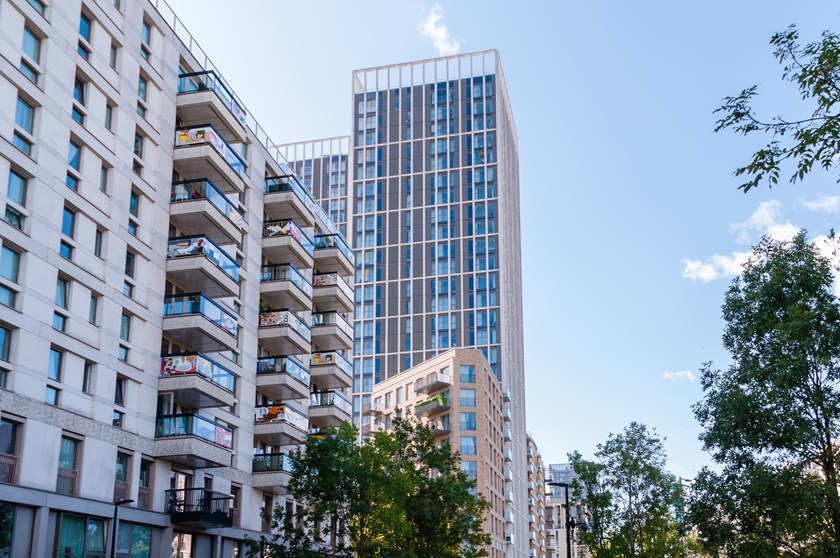Building Safety Act: 1 October regulations
Insight

Currently, it feels as though no property briefing would be complete without some mention of the Building Safety Act 2022 (BSA 2022). As will likely be familiar to the reader, the long-awaited act, and the even longer awaited supporting regulations, were passed in an attempt to hold developers (and, potentially, land owners) responsible for issues with fire safety in high rise residential blocks. A digest of some of the recent developments can be found here. The legislation remains very much a work in progress, in part because we are yet to see many claims brought under the legislation run through the court and in part because the numerous regulations (which in many ways form the backbone of the provisions) are still in the process of being enacted.
1 October hails yet another round of regulations which provide further detail on the existing legislative framework which will affect both Principal Accountable Persons (PAPs) and Accountable Persons (APs). The catchily titled Higher-Risk Building (Management of Safety Risks etc.) (England) Regulations 2023 (Safety Risk Regulations), as suggested by the name, apply to “Higher-Risk Buildings” only (an HRB is defined in section 65 BSA as a building with at least two residential units and at least 18 meters or seven storeys high). Below, we briefly look at some of the key provisions to come into force on 1 October. It is perhaps worth noting, however, that until the dust settles there is still likely to be something of a cloud of uncertainty around just who will be considered the relevant PAP / AP in any particular circumstance. A general concern is that it is an “honour” which will simply pass to the most responsive party with the deepest pockets. It is also key to note that these Regulations carry with them criminal sanctions: breaches can result in a fine and / or imprisonment and, therefore, the Safety Risk Regulations ought to be taken seriously.
Building Assessment Certificate: Regulation 3
The Building Safety Regulator (BSR) may direct a PAP to apply for a Building Safety Certificate. The Certificate is intended to give residents an indication that the Building Safety Regulator has assessed that the APs have met the specified statutory requirements for managing any building safety risks and maintaining a safe building at the time of the assessment. The PAP must apply for the Certificate within 28 days, beginning with the day on which the direction was given. If they fail to do so without a reasonable excuse, then they commit an offence with the potential for up to two years’ imprisonment (section 79(3) BSA).
This provides much needed detail concerning the information PAPs need to supply when applying for a Certificate. It also requires PAPs to include a statement confirming that each AP has complied with its duties / obligations as imposed by the BSA 2022. It is therefore crucial that PAPs are aware of the identify of each AP to ensure the statement can be made truthfully.
Management of Building Safety Risk: Regulation 4
APs must take all reasonable steps:
- To prevent a building safety risk from materialising (as soon as reasonably practicable after an HRB becomes occupied or they become an AP), and
- Prevent a safety risk from materialising and reduce the severity of any incident should such a risk occur, by managing such risks.
The AP must act by prescribed principles (as defined in the regulation). Some are clear, but some are not without ambiguity. Building owners who were hoping for clear guidance as to what their obligations are will therefore be disappointed until further guidance is given (either by the Courts or the Government).
Safety Case Reports: Regulation 5
A PAP for an occupied HRB must prepare a safety case report containing an assessment of building safety risks and providing a brief description of any steps taken to manage such risks (section 85 BSA). PAPs are then under an obligation to notify the regulator of the safety case report and provide a copy of the same to the regulator if requested (section 86 BSA). Unsurprisingly, there is no set template for a safety case report. However, Regulation 5 sets out the information a PAP must include in such a report. This includes descriptions of:
- The possible building safety risks that have been identified, the likelihood of those risks materialising and the assessment of the likely consequences if they do materialise.
- How the steps taken by each AP demonstrate compliance with their obligations (under section 84 BSA).
- The system for managing the safety of the building.
- The emergency plans which are in place for the building.
Mandatory reporting requirements: Regulation 6
Regulation 6 sets out the “prescribed information” APs must supply when an incident or situation concerning the structural integrity of an HRB has occurred (including incidents of fires). The Act and regulations refer to such an incident as a “safety occurrence”. This includes a notice that the safety occurrence has taken place, containing a brief description of the nature of the safety occurrence and the address of the building in which it took place. APs are also under an obligation to provide a report containing the date / time of the safety occurrence when it was notified to the Regulator, when the report to the Regulator was submitted and a description of the measure taken to mitigate or remedy the safety occurrence.
It is important to remember that the responsibility for reporting safety occurrences rests with the AP (regardless of whether building owners have managing agents handling the day-to-day management of their buildings or portfolios). APs should, therefore, be diligent in monitoring and reporting all potential safety occurrences in accordance with the rules.
Keeping of information and documents (the Golden Thread): Regulation 7
APs are obliged to keep information in accordance with the requirements set out by Regulation 7: in essence the information needs to be accurate, accessible, well managed and secure. Further guidance around the keeping of information is still expected. In the meantime, however, APs will have to ensure they have systems capable of organising, monitoring and maintaining such data, which, if nothing is currently in place, could prove time consuming and expensive. It is understood that the costs associated with this may be recovered from leaseholders via service charges (depending on the terms of the lease).
Enforcement: Regulations 13 and 14
Contravention and compliance notices are aimed at enforcing compliance with the various requirements for HRBs.
Contravention notices are issued by the AP and are served on residents in breach of the residents' duties (set out in section 95 BSA).
Compliance notices are issued by the BSR where it is felt the recipient is failing to meet the “relevant requirements” imposed by the BSA and regulations.
The Safety Risk Regulations regarding safety risks are intricate and comprehensive, with an increased emphasis placed on the importance of record keeping and engagement. While not mentioned above, it is also worth noting there is a requirement for a residents’ engagement strategy (Regulation 10) and a complaints procedure (Regulation 12).
For owners, it is crucial to understand the administrative obligations that come with this role. While the Government may provide more guidance in the future, it is recommended to carefully review the Safety Risk Regulations to ensure that all responsible parties, such as APs and PAPs, are fully aware of their responsibilities and that the building safety regime introduced by the BSA is followed.
If you have any questions about the nature of the duties imposed on APs and PAPs or more generally on the BSA 2022, please do contact Jo Ord, Jack Haworth, Jessica Eades, Philippa Shutter, Christina Tennant or your usual contact at the firm.
This publication is a general summary of the law. It should not replace legal advice tailored to your specific circumstances.
© Farrer & Co LLP, September 2023






